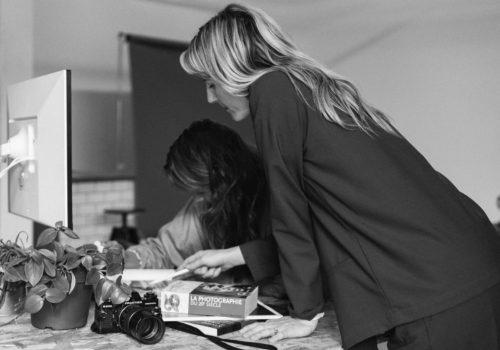With the digital platform Elles font la culture, the Ministry of Culture intends to help women and gender minorities develop their careers. Laurie Chapotte and Sarah Witt introduce us to Elles font la culture, the Ministry of Culture’s new platform for women photographers.
Could you start by introducing yourself and the other members of Elles font la culture?
There are five women behind Elles font la culture. Jennifer Stephan, who is a digital product creation coach, our developer Nadia Auger, Lauriane Fort, product manager, and the two of us, Sarah Witt as deployment manager and Laurie Chapotte, designer and co-host of the Ministry of Culture’s Digital Workshop.
















